If your crawl space is open or vented, here are 6 places to insulate your vented crawl space that could save you money and keep out pests. Remember, there is more to properly insulating your crawl space than just throwing up fiberglass batt insulation. You want to make sure you focus on air sealing and making it more difficult for critters to enter your crawl space.
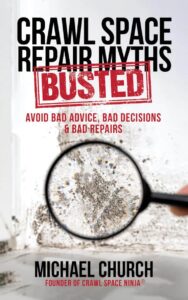
Michael Church’s Crawl Space Repair Myths-Busted book was written to help you Avoid Bad Advice, Bad Decisions, & Bad Repairs.
“This book is the Cadillac for crawl space information and Michael Church is your experienced driver. What can I say? It’s just an amazing read.” 5.0 out of 5 stars The real deal.

What Does the Department of Energy Say about Crawl Space Insulation?
Before I begin I want you to know that I am not an advocate for open or vented crawl spaces. I believe and research shows that crawl space encapsulation is better than open crawl spaces. Sealed crawl spaces control moisture and making your home more energy-efficient than unsealed crawl spaces.
However, I do recognize not everyone shares my enthusiasm for sealed crawl spaces. Plus, not all crawl spaces can be sealed based on many factors. Hopefully, this article will assist those of you that have a vented crawl space. But first, let’s see what the Department of Energy has to say about crawl space insulation.
“How you insulate a crawlspace depends on whether it’s ventilated or unventilated. Most building codes require vents to aid in removing moisture from the crawlspace. However, many building professionals now recognize that building an unventilated crawlspace (or closing vents after the crawlspace dries out following construction) is the best option in homes using proper moisture control and exterior drainage techniques.
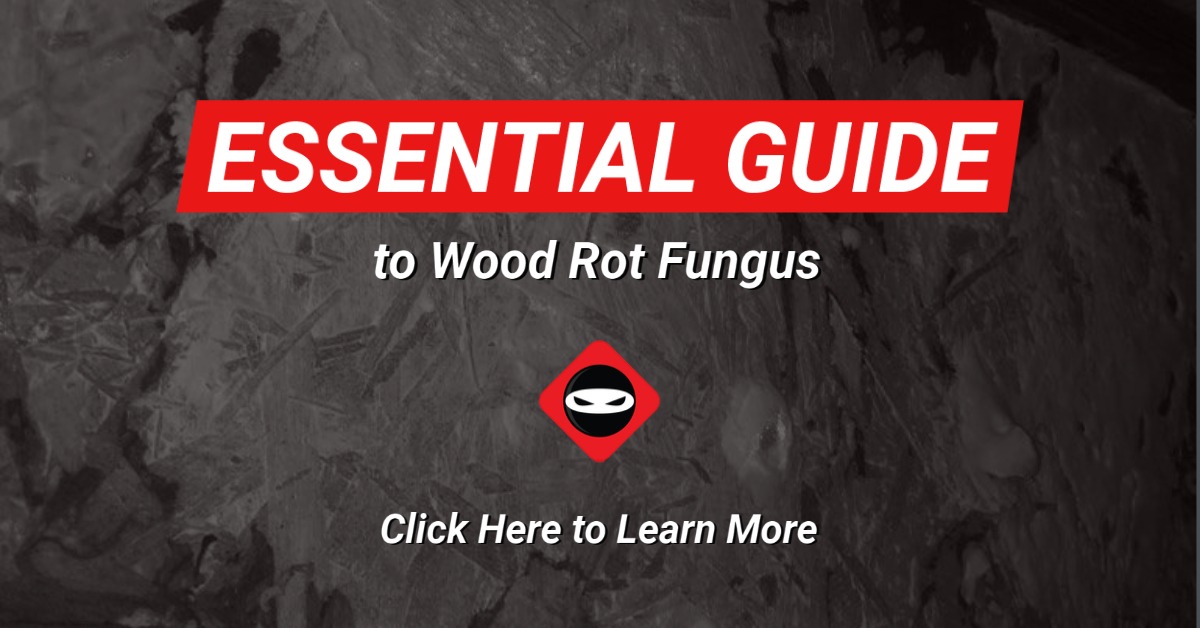
1. Insulate Rim Joists of the Vented Crawl Space
The Building Science folks say that insulating and air sealing the rim joist is critical. If that is true, then why didn’t your builder air seal and insulate the rim joists? I think we all know the answer to that question. If you have a basement, garage, or crawl space you should insulate the rim joists and air seal them. Rim joist insulation will benefit your home if the crawl space is vented or sealed.
Installing air-sealed rim joist insulation will stop or slow air movement from the crawl space to the living space. This is a great way to make your home less drafty. It will also slow the transfer of cold air, crawl space odors, and moisture into the living space. If you are dealing with a moist or stinky crawl space I would recommend the Ninja Crawl Space Encapsulation System.
2. Insulate Sill Plate – Maybe
Sill plate insulation is not that common nor do we do much of it. But if your sill plate shows major gaps, it should be insulated. If your sill plate sits well on the foundation wall with minimal gaps, don’t bother.
If you do insulate the sill plate, make sure not to destroy the termite gap. Covering the sill plate could void a pest control warranty if not done properly. I’d recommend using caulk to seal between the sill plate and the foundation wall. Caulk is easier to control with very little expansion. Spray foam could over-expand and cover the termite inspection area.
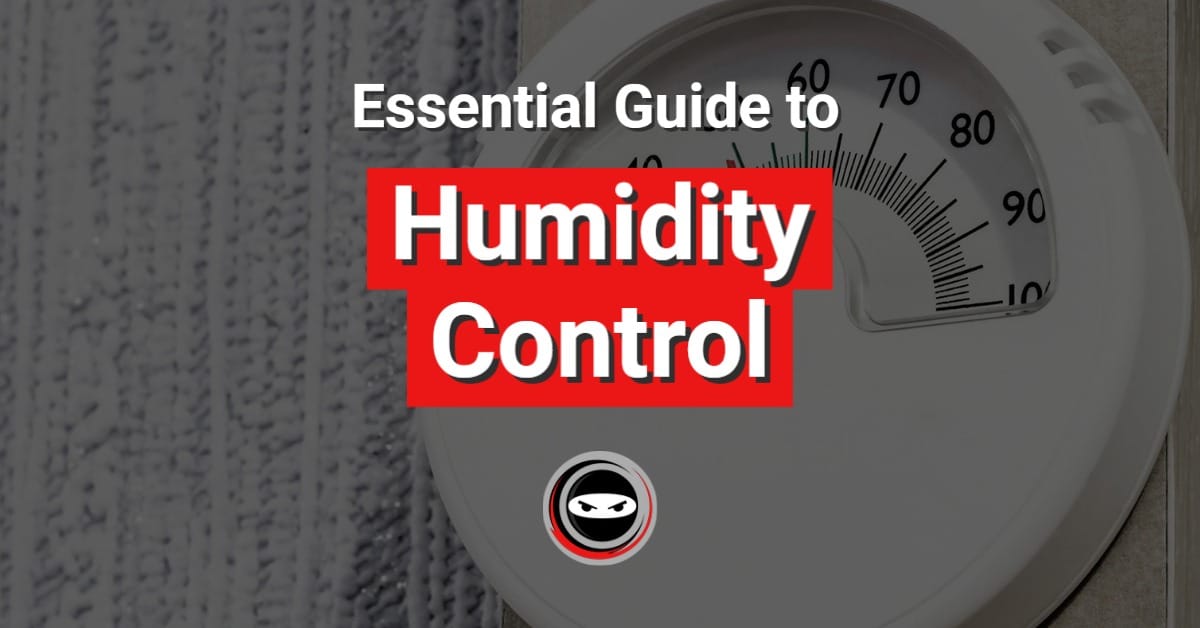
3. Air Seal the Sub-floor
Air sealing the sub-floor is hardly ever done. This is a crucial part of the crawl space insulation project. Of course, you may need to remove the batt fiberglass insulation to accomplish this but it is worth it. If your current sub-floor insulation is not in good shape or damp, go ahead and throw it away when air sealing the sub-floor. Air seal major gaps around plumbing, electrical, and HVAC ducts. Do not spray foam the entire sub-floor. This could cause other problems in the future. For larger gaps, use spray foam and foam board to air seal the sub-floor.
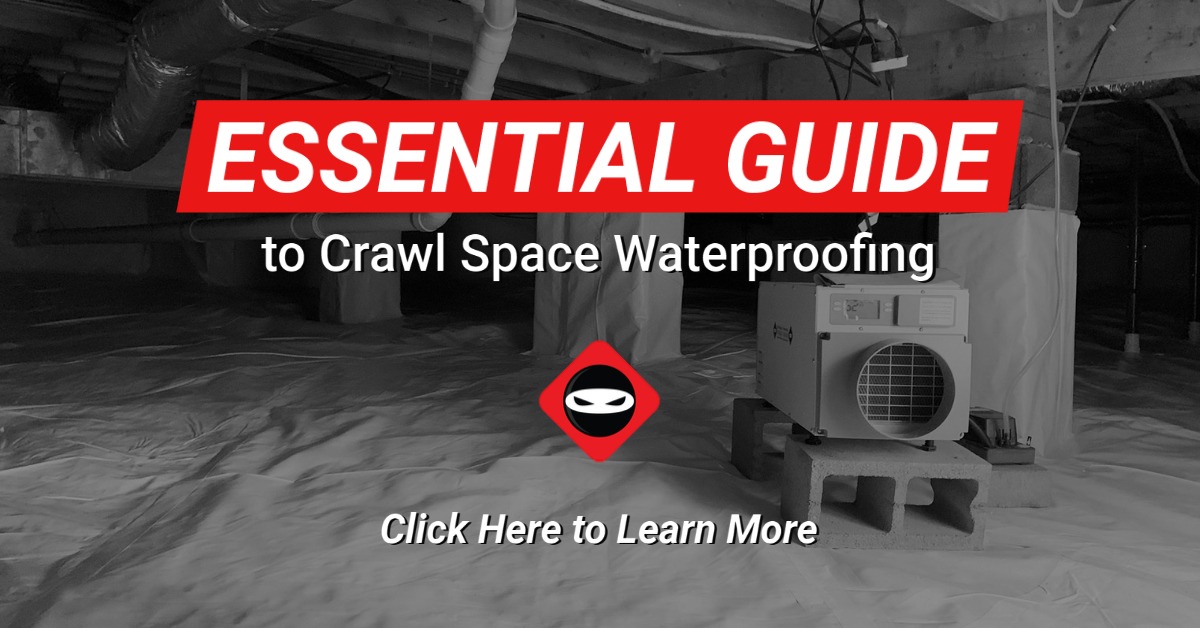
4. Always Insulate the Sub-Floor of a Vented Crawl Space
If you are keeping your crawl space vented, sub-floor insulation is required by building code. If your crawl space requires mold treatment and the sub-floor insulation is removed in the process. Make sure you replace the sub-floor insulation. Don’t let the contractor talk you into not having insulation in the sub-floor. Code requires it and it creates a valuable thermal break between your cold crawl space and your living space. The type of insulation can vary from rock wool to fiberglass. As I mentioned in the air seal section, do not spray foam the entire sub-floor.
Ready to find out more?
Drop us a line today for a quote!
Click Here5. Duct Insulation and Air Sealing
If your crawl space is vented, this is more important than if it is encapsulated. Since you are allowing cold or hot air to enter the crawl space freely. You must make sure the air ducts of your HVAC system are sealed and insulated. This will not stop them from condensation if the dew point is reached, but will make sure the air does not get lost in the crawl space through duct leakage. If your ducts are located in the attic or other non-conditioned areas, air seal and insulate them properly to save energy. This will increase your comfort too.
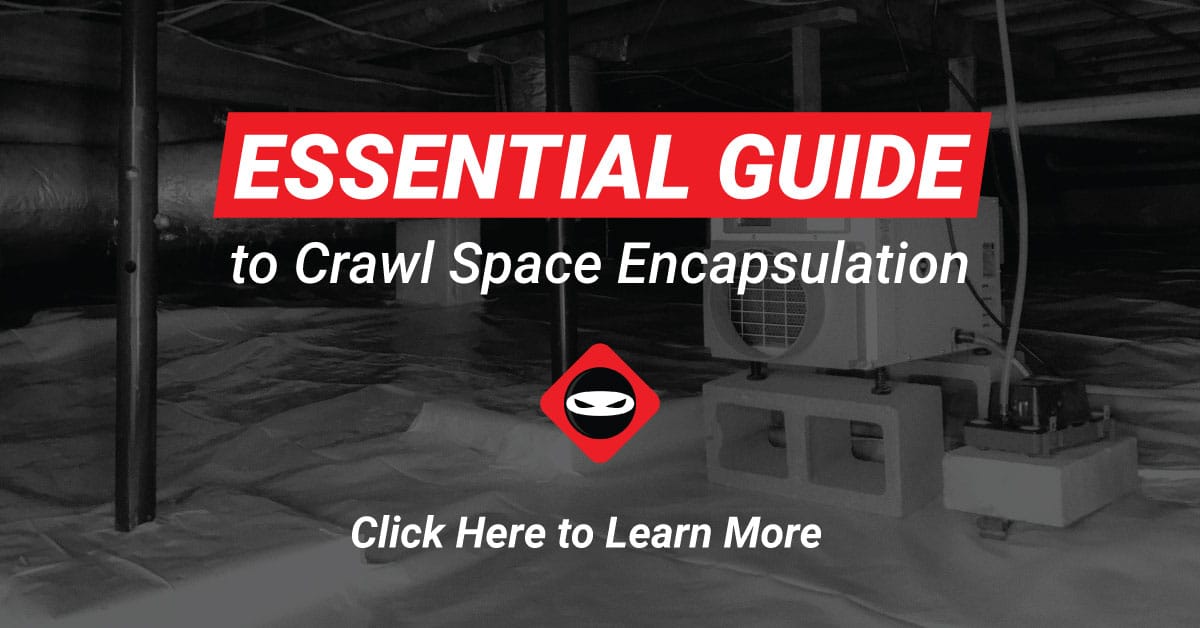
6. Plumbing Pipe Insulation
Since your vented crawl space is open to the elements, plumbing pipe insulation is vital. If you live in a cold climate, the cold air freely enters the crawl space through the open vents. This is not the case in a sealed or encapsulated crawl space. Pipes should be well insulated and maybe have a pipe heat tape added for extreme winters. The heat tape is only used as needed but could make a difference in preventing a plumbing leak.
What Next?
Do you need help with mold removal, crawl space encapsulation, crawl space insulation, vapor barrier, waterproofing, foundation repair, or controlling humidity in your crawl space and you live in Georgia, Delaware, North Carolina, South Carolina, Tennessee, Ohio, or Kentucky? If so, please contact us to schedule your assessment. Also, let us know in the comments below if you have an idea for a new blog topic.
Perhaps you’d like to tackle your own crawl space repair. Visit our DIY Store.
Contact us if you need help fixing your crawl space or yard drainage by clicking here.
Learn about Crawl Space Ninja Franchise opportunities.

18 thoughts on “6 Places to Insulate Vented Crawl Spaces”
Hi Michael,
I just read on your site not to spray foam entire subfloor?? I was planning to have a closed cell spray foam done in my large 40’x15′ crawl space that’s vented and cold and causing a lot of mold conditions in the interior of the house. Is the subfloor the ceiling of the crawl space? So how should it be done with spray foam?
I am also planning on putting a poly vapor plastic and closed cell foam on the floor of the crawl space because its dirt and the cold and mold issues are severe…
I’m making decision tomorrow so please advise!!!
Thank you
Hi Bill, hopefully this video helps explain and there are some tips to follow if you do plan to spray foam the sub-floor to avoid issues. https://youtu.be/MWpjdI14vT4
Yes the sub-floor is the ceiling of the crawl space. I don’t usually recommend a full spray of spray foam of the sub-floor because it can trap moisture and is difficult to remove if you ever need to. You can still air seal major penetrations and install a batt insulation with R-value to meet your code like R-19 in the south and accomplish the same thing in my opinion. If your crawl space is vented a minimum 6-mil vapor barrier is required and you can insulate the dirt of the crawl space although that is not a common practice we do. Hope that helps.
Hi Michael,
very helpful…..thank you….just want to add a bit more info to see how your recommendation would be…I live in the cold Northeast and this space is high crawl space approximately 5 feet in height and 40×15 with 3 foundation vents. I have batt fiberglass(10 year old well built house) insulation in crawl area and a basic plastic 10 mil plastic on the dirt floor but still had severe moisture causing mold on interior house furniture and cold air coming up into the house. Maybe some sort of floor to wall to sill/rim joist encapsulation or insulation instead of spray foam subfloor……Also reading a lot of bad stories about spray foam I was thinking of using foam board for whatever direction the project is done…What do you think??
Thank you
I don’t believe any type of insulation will control moisture and prevent mold. Have you considered installing a dehumidifier and encapsulating the crawl space and adding foamboard on the foundation walls? This article may help: https://crawlspaceninja.com/encapsulation/essential-guide-to-crawl-space-encapsulation/
I live in Minnesota. The weather can be -30 to 90°. The 95% efficient furnace is in my crawl space with 6 mil plastic covering the dirt floor. 2 inch foam on the concrete block foundation with spray foam on the rim joists. Plus a dehumidifier running. No mold or musty smell. Also a wood stove to offset the propane. And a mini split for A/C and heating above 35°. The thermostat is set to 50° when I’m occasionaly not there in the winter. It’s never been better!
That’s great Ron, thank you for sharing.
Hello Michael – this is a great thread. Thanks for being an expert on this. I live in PA which is unfortunately outside your service area. I have a 4’high crawl space under 15 year old construction. Crawl space is approx 750 sf, block walls, 4 foundation vents and batts in the 2×12’s. I have board insulation on the outside of the walls, not inside. I’ve been closing my vents in the winter and opening in spring/summer as to avoid freezing pipes. I have 10 mil poly down with a good layer of 2B stone on top.
Lately, I’ve noticed a musty smell since last year and it won’t go away. No rainwater issues. All spouting goes away from the house. Block walls don’t look wet, but some moist.
I’d really hate to encapsulate the whole thing, so is there anything else I can do?
I’m thinking after 15 years that the batts might just need to be replaced, new vapor barri
Hi Matt, I think the wood joists and subfloor are most likely dry now that it is winter but there is a likely chance the musty smell is coming from there if you have not been controlling or monitoring humidity in the summer to ensure it has been under 60%. Replacing batts and vapor barrier normally does not address musty smells. If your wood has mold, removing/replacing batts could cause molds to go airborne and make matter worse. The mention of moist block walls could be an indication of high humidity because the moisture tends to evaporate inside the crawl space. I’d recommend 1. checking humidity, 2. checking wood moisture levels and 3. perhaps doing a surface mold test in several spots of the subfloor to see if mold is present before doing anything with vapor barrier or insulation. Hope that helps and thank you!
Hi Michael,
I recently purchased a ranch home in Southern KY. It is built on a hillside with ~50% below grade and 50% exposed cement block wall. The home was originally vented with no vapor barrier and readings in the 80% humidity range, batt insulation hanging from the ceiling and many gaps on sill/overhang and signs of rodents. Since taking ownership, I insulated all walls with 1″ foam insulation, put down 10 mil plastic on the dirt floor, running up 12″ on foam board. Taped all seams on board and floor. Repaired all batt insulation, sealed all vents and gaps. Added a dehumidifier and air sealed all openings to living space. I also insulated all plumbing. The crawl space is not conditioned, but I have maintained a 50% humidity level at around 50 degrees F for the last 5 months. All rodent issues have been resolved. Do you recommend removal of the Batt insulation? Are there any other measures you recommend? I do see signs of mold/mildew from prior to my actions, but it appears to be “dead” although I have not remediated. It certainly is not professionally encapsulated, but I feel fairly close. The ceiling/subfloor height ranges from 3′ to 9′
Great job Steve! Sounds like your encapsulation is doing what it is supposed to do, keep the crawl space dry. If you decide to address the mold or if the subfloor insulation is wet/damaged then I’d remove it. We only remove the subfloor insulation if there is cause to do so. Hope that helps.
Hi Michael,
I live in PA and have a 68 year old brick house. Dry finished basement with a small raised crawl space (about 4 ft high, 25 ft long x 15 ft wide …must have been due to not wanting to blast or additional cost to make entire basement under the house). It is not vented other than the opening ( 3×3) to said crawl space, which is inside the full height finished basement area within a large walk in closet (abt. 5×7), insulation in the floor joists (old pink stuff, may have old water damage or exposure possibly), solid concrete walls with 1 small hairline crack, and a thin concrete floor. It is very musty/mold smelling and pretty cold. I am about to install a small mini split with a heat pump to the finished basement, but am unsure if the crawl space needs work.
– what DIY items do you recommend ordering if any?
– should opening within have a grated cover? (It’s an odd size so I wouldn’t be able to order one unless I built a wood frame around opening to accommodate standard size?)
If the crawl space is damp and musty and the basement has room for a dehumidifier, could you install a dehumidifier in basement and vent to crawl space? This could be done using a bathroom style fan with 4-inch ducting through the foundation wall to blow dry air into crawl space. That should keep you from having to add a grated cover over 3×3 door. Hope that helps. Here are some products I recommend if that seams to make since for your situation: Bathroom fan: https://diy.crawlspaceninja.com/panasonic-whisperline-in-line-fan-model-fv-10nlf1e/ Duct kit: https://diy.crawlspaceninja.com/vent-fan-install-kit-for-whisperfan/ Dehumidifier: https://diy.crawlspaceninja.com/aprilaire-e070-dehumidifier/
I have a crawl space that is 2000sf/24” to bottom of joists and w/concrete floor. Currently having HVAC run in the space since we’ve never had AC. Also adding a dehumidifier for just the crawl (not ducted to HVAC) to help with humidity. My band joists are air sealed all around w/gun foam along w/all subfloor penetrations. Band joists are then insulated w/fiberglass. Question is can I seal the crawl space vents when I’m insulating the subfloor? I had a local waterproofing contractor out and they didn’t recommended encapsulation since my crawl had a slab poured within it. Also had some signs of past sweating on the block foundation so their advice was to not spray the walls either. But they did recommend to seal off the vents and add a dehumidifier which was also echoed by my HVAC installer. They both felt my thermal break should remain at the subfloor. So air sealed vents, band joists and subfloor but no insulation on the block foundation walls was the consensus.
Full disclosure, I’m an insulation contractor. Been in the trade since 2001. What I’m not, is a crawl space expert. There are various things to consider to make that claim. We don’t offer encapsulation, mold removal, waterproofing as part of what we do. So I’ll stick to what I know and defer to you on this. Please advise. Thanks.
Hi Manny, you do not need to insulate the foundation walls unless you seal the vents. If you seal the vents, I’d install a dehumidifier to lower the dew point and control humidity. The slab will always allow moisture up from the ground and sealed vents/dehumidifier are best ways to handle this in my opinion. Hope that helps.
Michael,
We have a 20′ x 15′ crawl space with a dirt floor, 6 ft high cinderblock walls, and one open vent. There is presently relatively thin plastic sheeting over the dirt floor, and batt insulation that is partially fallen towards the floor in places. We have had a couple of contractors look at the crawl space and said it does not appear that we have had any specific water issues (the blocks don;t have any indication of water discoloration, etc,), the wood looks dry, and no signs of mold. There are a couple of HVAC vents that run through the area to provide air to our living room above. Lastly, we are in an area with radon issues, and last year we had our sump pump (located elsewhere in the finished basement) sealed and actively vented; this reduced our radon numbers in the finished basement from about 12 to 2.
The living room floor above does get cool in the winter, and we have had indications that a few mice are getting in through the crawl space. We are trying to decide if it is worth the money to encapsulate the crawl space, or just try to re-insulate the subfloor. The contractors recommended we do the full encapsulation (floor, walls, rim joists, etc.) and close the outdoor vent. One recommended a dehumidifier, and the other recommended we install a fan system to take air from the room above and pass it through the crawl space to the rest of the basement through the wall.
We are concerned that if we seal the vent, then radon will slowly seep through even a new vapor barrier, and it will make things less healthy. We have been a bit confused in your postings about whether vent fans are evil or sometimes the right solution.
Our options might be:
1. Do the floor and wall encapsulation, insulate the walls and sills, etc., and put a vent fan to pull crawl space air outside (obviously from air leaking from the rest of the house into the crawl space)
2. Just insulate the walls and install new insulation in the subfloor, leaving the vent open, If we do this, it isn’t quite clear what that insulation should be (batt, foam board, etc.)
Do you have any recommendations on what we should do here? It is not clear that the advise we are getting from contractors reflects what we need to do, rather than what they want to do (and charge us for).
Many thanks for your input (and all your posts).
We recommend a dehumidifier if the crawl space is damp/high humidity and a fan blowing out to address soil gases. In many parts of the country both are needed. Fans do not dry crawl spaces and dehumidifiers do not address soil gases. My comments about fans being used by contractors to “dry” crawl spaces is when I am negative about fans. Hopefully, that helps in your decision. Thanks for the comment.
Hi. I am in Washington state. I have a crawl space that is about four feet high. I can smell mold coming from my sun floor, from in the home. No professional can find it. Accept my handyman when I had him replace the bottom 1-2 feet of my siding and found some. That helped a lot but it is still present. I can smell it coming from the floor not just the edges along the wall. This seems to be only present on the dark sides of my house (north and east), also the sides without rock drainage in the garden beds/around the foundation. I am going to dig out the garden beds and add rock for drainage. The fiberglass insulation is falling down in some places and needs to be replaced. This is a vented crawl space. I have been told the vapor barrier needs replacing and have been told it does not. It I put something solid in the living room (north east corner) floor (smell of mold is the worst) like a dog bed box etc with feet moisture bills up between the item and carpet. I have removed the carpet. The subfloor from inside the house was in good condition. I put down a vapor barrier and LVP. Should I just replace the fiberglass, what R value is best? Make sure the rim joist and sill plate are insulated? What is best to use for insulating the rim joists? Or do I use plyiso board on the walls, Or the subfloor? Can I seal a vented crawl space? When I pull off the batting I expect to find mold and I will treat it thoroughly. But I need to stop the moisture.
Hello Claire, I am concerned your subfloor and joists may be damp. I would recommend checking the wood moisture under your sunroom. There is not always visible mold when you smell it. Use a meter like this type. If the subfloor is damp then sealing the crawl space, removing the fiberglass and drying the wood with a dehumidifier would be my 1st step. I hope that helps. https://diy.crawlspaceninja.com/pinless-moisture-meter/